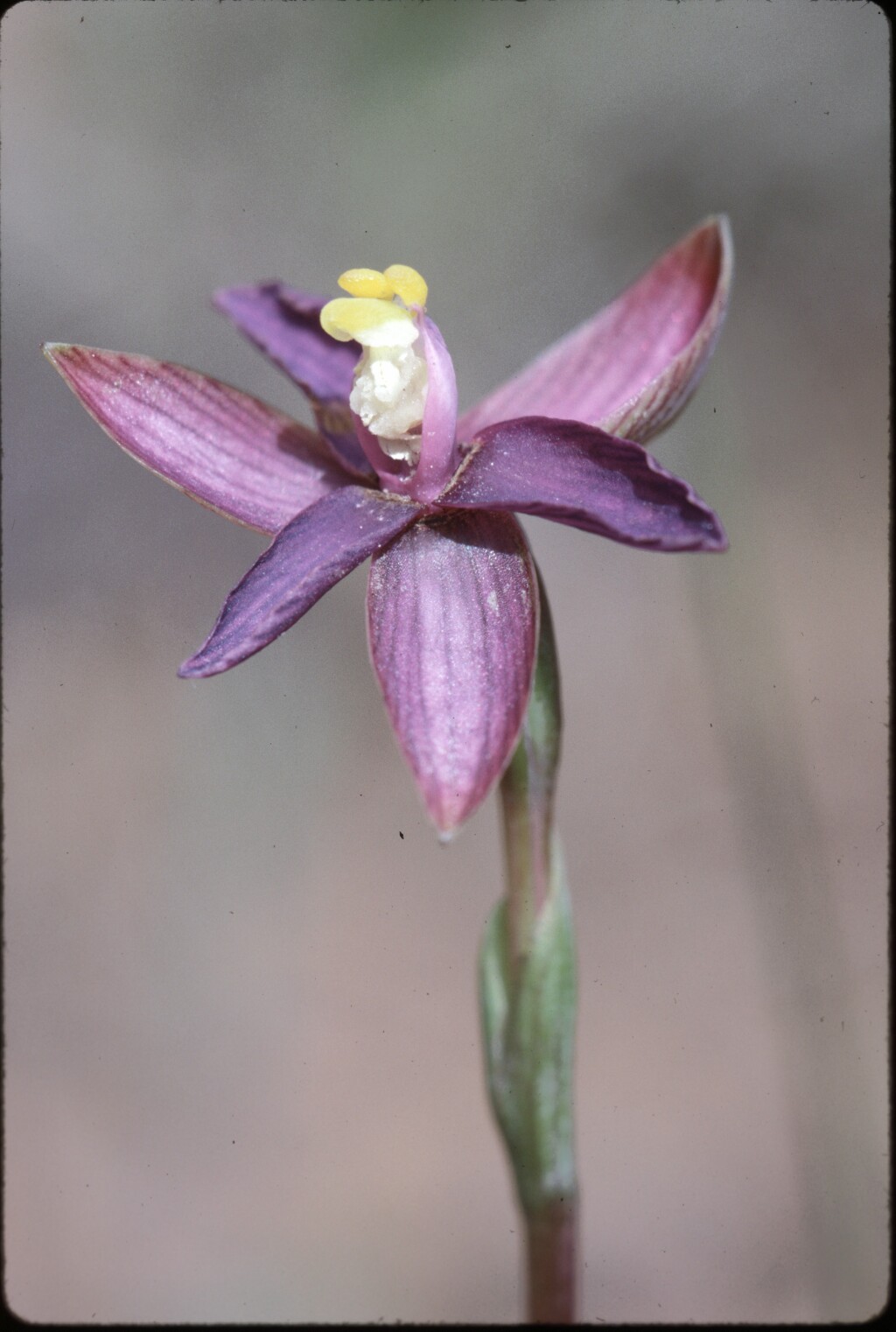Thelymitra matthewsii
Cheeseman Spiral-leaved Sun-orchidFlowering stem erect, wiry, usually straight, sometimes flexuose, 10–22 cm tall, c. 1 mm diam., green to purplish. Leaf spirally twisted or strongly flexuose, basal sheath 1–2 cm long, villous, lamina attenuate to filiform, often encircling the flowering stem, 5–9 cm long, distally 1–2 mm wide, basally auriculate with lobe 3–9 mm wide, often undulate, sometimes minutely pubescent along margins. Inflorescence 1(–2)-flowered. Sterile bract 1. Perianth segments ovate to lanceolate, 8–10 mm long, purplish, violet or purple-mauve, with darker longitudinal veins, petals and sepals often of contrasting colours. Column ovoid, 5–6 mm long, purple; mid-lobe a low crest, less than 1 mm high, covered with small grape-like glands; lateral lobes arising from behind the anther, porrect, shortly stalked, asymmetrically ovoid to broadly elliptic, 1.5–2 mm long, c. 1 mm wide, minutely warty, yellow. Anther with oblong-ovoid to oblong-cuneate apex extending beyond lateral lobes, upper side covered with short, velvety hairs. Flowers Aug.–Sep.(–Oct.).
Wim, VVP, GipP, OtP, Gold, GGr, EGL. Also SA. New Zealand. Widely distributed but rare, in coastal sandy flats or slightly elevated sites (to 400 m) in well-drained soils (sandy loams to gravelly limestone soils) in open forest. Plants colonise disturbed sites and slowly disappear as these sites stabilise.
Flowers open widely on warm days, but are self-pollinating and short–lived.
Weber, J.Z.; Entwisle, T.J. (1994). Thelymitra. In: Walsh, N.G.; Entwisle, T.J., Flora of Victoria Vol. 2, Ferns and Allied Plants, Conifers and Monocotyledons, pp. 840–854. Inkata Press, Melbourne.
 Spinning
Spinning


